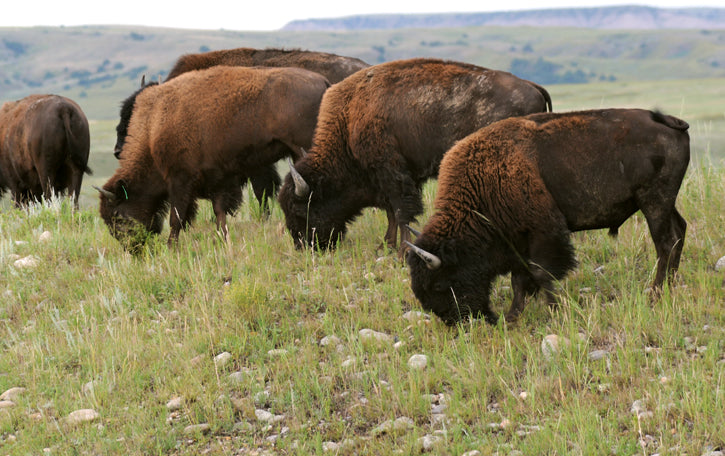Written by Colton Jones
On the ranch, we are fortunate our lifestyle permits social distancing with ease. Camping trips on the river, fishing expeditions and a trip to check on the herd can all be done without seeing another human. And for a moment, creates a sense of normalcy.

I’ve always been infatuated with space, and I have to admit, five months ago I didn’t think I could appreciate it any more than I do now. We are in drought conditions on the ranch. Dams are low and some are empty. This makes water and pasture monitoring critical. Tanks need to be checked daily, which has provided me an excuse to spend time with the buffalo.
While checking on the herd, the biologist in me can’t help but search for relationships between man and beast. I try to make my rounds in the morning before it gets hot. The herd also utilizes the cooler temperatures to move and graze. They look happy, healthy, and carefree. The environment that they reside in provides large expanses of land that allow them to behave as evolution has intended.
In contrast, we now know that human influence on the environment can dictate our ability to contract, and/or combat disease in a negative manner.
Much like large highly populated cities, feedlots act as a vector in transmitting diseases. Diseases such as mycoplasma (respiratory infection), pink eye and Johne’s disease (intestinal fatal infection) have a higher infection rate among beef and buffalo in feedlots, as well as large commercial dairy operations. The close proximity from one individual to another and unsanitary conditions, increases the chance of transmission. This, along with a poor diet consisting of grain-based feed for animals and sugar-based diets in humans, hinders the body’s natural ability to fend off disease.
Because both man and beasts’ environments have been so greatly altered in the name of “Big Ag”, both are becoming increasingly dependent on pharmaceuticals, many of which can have negative side effects. Prescriptions for heart disease and diabetes are among the top prescribed drugs in America. Antibiotics and “pour-ons” are most common in confined beef and buffalo operations.
Climate change has also manipulated the way in which some diseases spread. Lyme disease, waterborne diseases and mosquito borne diseases are seeing more opportunistic environments caused by the increasingly dramatic changes in weather. Poor air quality has increased the number of asthmatic patients along with a decrease in available, safe, drinking water.
Our commercial food supply system’s vulnerability has become exposed as it travels through a gauntlet of similar man created issues. There is hope as consumers are becoming increasingly aware of how their food is produced, from the roots up.
During my time with the herd, I always try to make a conscious effort to be thankful. Thankful for my time with them. Thankful for the privacy and vastness of the plains. And thankful for a particular moment that provides solace and gives me hope for restoration of all man and beasts.
Photo Credit: Jill O'Brien

17 comments